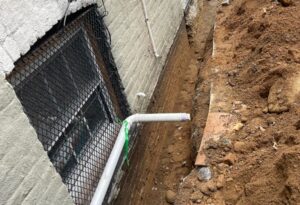 Nothing can be worse than a wet basement to any property owner! Water trickling down the basement walls or the soggy floor all accounts for an unhealthy and annoying living condition. Apart from the musty odor or the damp patches, a leaky basement is a severe threat to the building’s foundation. The basement is considered a part of the foundation, which is the cornerstone of the structural integrity of a building.
Nothing can be worse than a wet basement to any property owner! Water trickling down the basement walls or the soggy floor all accounts for an unhealthy and annoying living condition. Apart from the musty odor or the damp patches, a leaky basement is a severe threat to the building’s foundation. The basement is considered a part of the foundation, which is the cornerstone of the structural integrity of a building.
Hence, basement waterproofing Queens NY, is quintessential to safeguard a building from devastating water damage. A small leak can lead to havoc if not addressed promptly. However, advanced basement water leak repair techniques have enabled comprehensive protection against water damage, ensuring lasting durability and enhanced structural strength.
Generally, there are three popular methods of basement waterproofing. We will discuss them briefly in this blog. But, before that, let us understand the factors causing damp basements.
Causes for Damp Basements
In Bronx, Queens, Manhattan, Long Island, Brooklyn, and Richmond Hill, wet basements are a prevalent issue because of the following reasons:
- Cracks- Cracks in the walls, ceiling, floor, and around doors and windows are ideal passages for water seepage.
- Hydrostatic Pressure- Also referred to as underground water pressure, often pushes through gaps and crevices in basement walls and floors.
- Improper Drainage- If you do not have a sump pump and a properly installed trench drain, water will accumulate around the foundation. Basement waterproofing companies consider it one of the primary factors for wet basements.
- Improper Slope- The ground must be sloped away from the foundation to prevent pooling water around it.
- Condensation- Water depositing on the cold basement surfaces is also a notable cause of dampness, mold, and mildew.
To combat all the prevalent causes of water damage, integrated basement waterproofing Queens NY, must be performed.
Types of Basement Waterproofing
Knowing the factors responsible for wet basements, let us now focus on the remedies, which are typically of three types:
- Interior Waterproofing- Basement waterproofing cost for the interiors is the most cost-effective, and the process is quick and easy. In this case, waterproof sealants are applied to the cracks and holes in walls, ceilings, floors, doors, and windows to keep them watertight. The principal motive of interior waterproofing is to ensure that basements stay dry while expelling moisture intrusion. Nonetheless, interior waterproofing cannot address all the water damage factors.
- Exterior Waterproofing- Severe basement water damage is caused mostly due to external factors. So, exterior basement waterproofing is the most crucial step towards effective and long-lasting results. However, it is an invasive procedure requiring professional intervention with high-end expertise and comprehension. The process requires excavating the soil around the foundation of your building and applying a waterproof sealant on the exterior walls or installing a waterproof membrane. Also, your basement waterproofing contractor will install a functional gutter system that will direct water away from the foundation of your building. The gutter must be installed and maintained properly to ensure there is no clogging or debris buildup. Also, the downspouts should be sloped away from the foundation.
- Drainage Structure- The fundamental purpose of the drainage structure is to keep groundwater or rainwater away from the foundation. So, the installation of a sump pump and soil drains is essential to ensure an operational drainage system. Diverse drainage structures are available for individual property requirements. Nevertheless, whichever drainage type you install; it must not retain moisture around the foundation.
Conclusion
You may always want to curb the expenses for basement waterproofing Queens NY, but doing so may not be viable in every scenario. To ensure longer protection and extended lifespan, always let the professionals decide what’s best for you.
